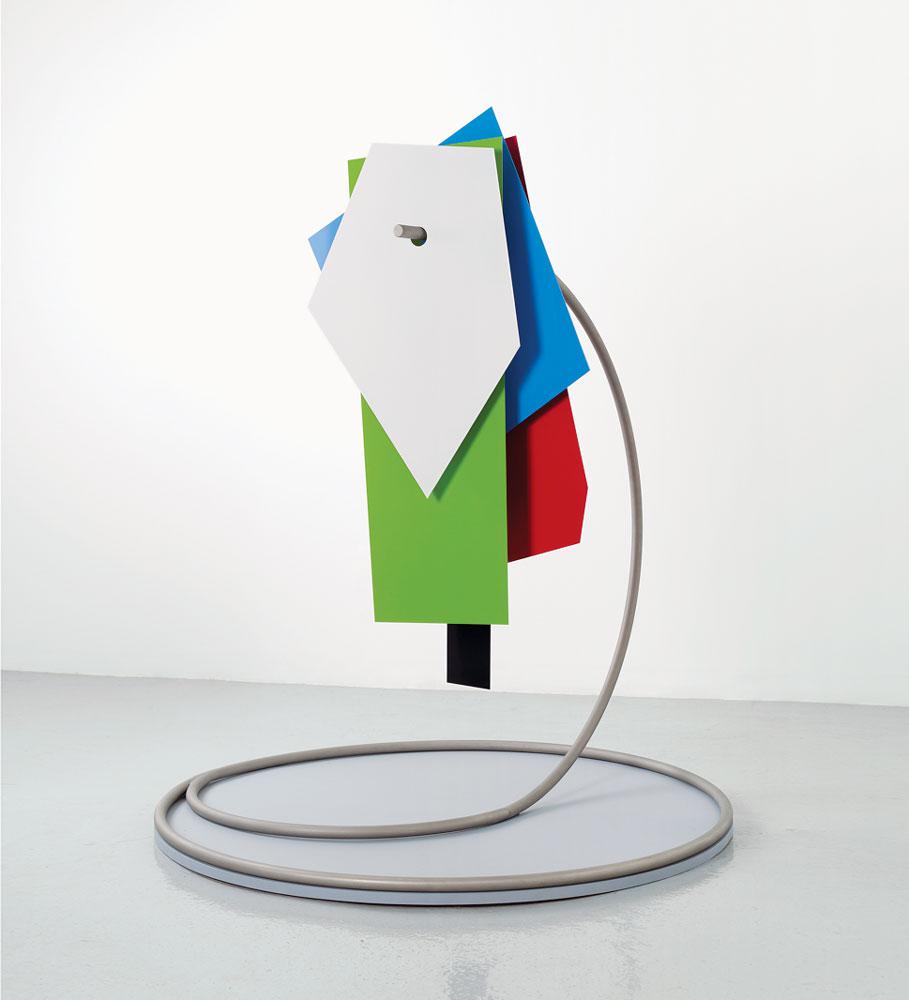In Jennifer Marman and Daniel Borins’s recent exhibition at Georgia Scherman Projects, two oversized pairs of googly eyes mounted high on the gallery walls tracked the viewer’s every movement. Wittily titled Google 2.0 (2010), the eyes—which whir and clunk as they shift from side to side—are an obvious reference to the ubiquity of surveillance systems in an era of digital information. But these are not the eerily invisible surveillance devices of George Orwell’s Nineteen Eighty-Four. Instead, Marman and Borins offer systems for seeing that are clunky and awkward, prone to glitches and meltdowns caused by their internal logics.
While the eyes are a deceptively simple gesture, they are a fitting introduction to the duo’s latest body of work: a series of paintings and sculptures that test the limits of different perceptual systems for organizing visual data, often to comic effect. In the gallery’s front room, Marman and Borins riff on the traditions of Abstract Expressionism using the language of computer software in seven large-scale paintings composed of squares in vibrantly coloured hues. Evoking the minimalist works of Modernist painters such as Josef Albers and Kazimir Malevich, Frag 7 (2012) looks like a JPEG file whose pixels have been shuffled out of order, with squares of mint-green, cerulean-blue and aubergine interrupted by “empty” swatches of black. Frag 7 and its accompanying paintings, Defrag 7 and Defrag 7 Corruption Mask (both 2012), take their names from the process of fragmentation that occurs in the information storage systems of computers and other mass-storage devices: when they do not have the space to store files as complete units, information systems fragment the files into smaller parts, inserting them wherever there is free space. Defragmentation programs attempt to put these smaller parts of files back together again in the correct sequence in order to improve the computer’s speed of access. Marman and Borins’s suite of paintings seems the product of a defragmentation program that has attempted to make sense of an abstract painting, but has suffered a glitch halfway through the rendering process. All the constituent parts are there, but they are disconnected from their original relationship.
An interest in decoding “what something really is” was also at play in the exhibition, with materials masquerading as other objects: Wire Ball (2012), for instance, looks like the ball of rubber bands often found atop an office desk, but is in fact a weighty replica of a tangle of multicoloured wires made from resin. Similarly, Smart Cube (2012) appears at first to be a transparent minimalist cube, but literally becomes opaque as soon as the viewer approaches it for a closer look. Taken together with the series of “glitch” paintings, these objects point to the arbitrariness of the units that make up our everyday perceptions, prompting us to think differently about how we see and represent the external world.
This is a review from the Spring 2013 issue of Canadian Art. To read more from this issue, please visit its table of contents.









